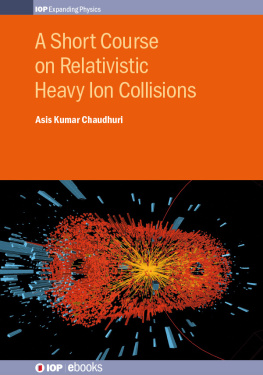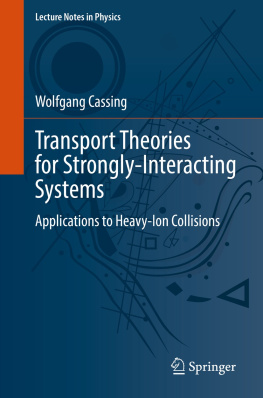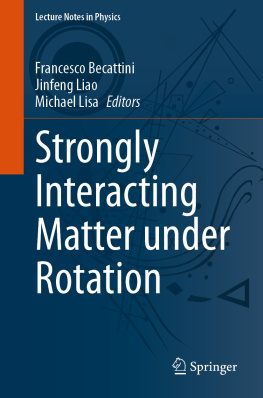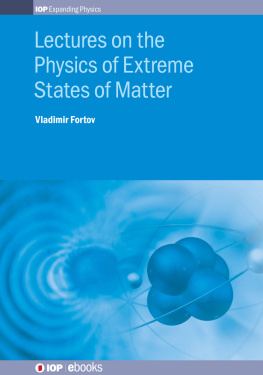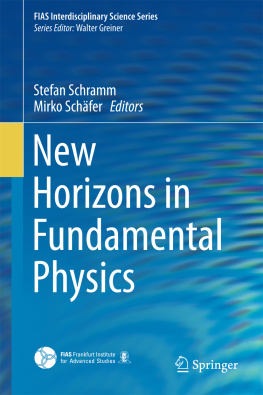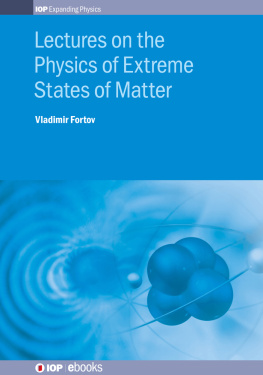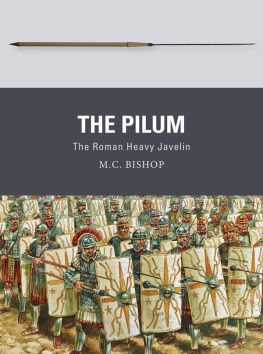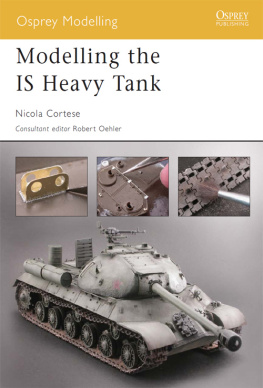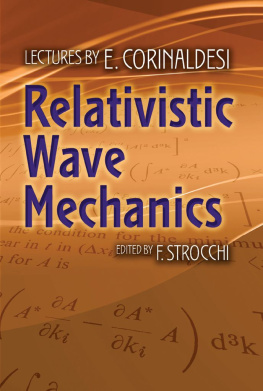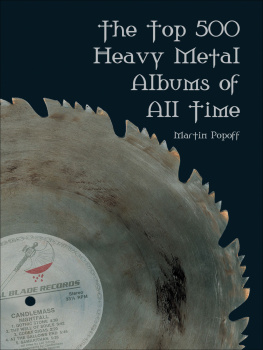A Short Course on Relativistic
Heavy Ion Collisions
A K Chaudhuri
Variable Energy Cyclotron Centre, Kolkata, India and Homi Bhabha
National Institute, Kolkata, India
IOP Publishing Bristol, UK
IOP Publishing Ltd 2014
All rights reserved. No part of this publication may be reproduced, stored in a retrieval system or transmitted in any form or by any means, electronic, mechanical, photocopying, recording or otherwise, without the prior permission of the publisher, or as expressly permitted by law or under terms agreed with the appropriate rights organization. Multiple copying is permitted in accordance with the terms of licences issued by the Copyright Licensing Agency, the Copyright Clearance Centre and other reproduction rights organisations.
Permission to make use of IOP Publishing content other than as set out above may be sought at permissions@iop.org.
A K Chaudhuri has asserted his right to be identified as author of this work in accordance with sections 77 and 78 of the Copyright, Designs and Patents Act 1988.
ISBN 978-0-750-31060-4 (ebook)
ISBN 978-0-750-31061-1 (print)
DOI 10.1088/978-0-750-31060-4
Version: 20140901
IOP Expanding Physics
ISSN 2053-2563 (on-line)
ISSN 2054-7315 (print)
British Library Cataloguing-in-Publication Data: A catalogue record for this book is available from the British Library.
Published by IOP Publishing, wholly owned by The Institute of Physics, London
IOP Publishing, Temple Circus, Temple Way, Bristol BS1 6HG, UK
US Office: IOP Publishing, Inc., 190 North Independence Mall West, Suite 601, Philadelphia, PA 19106, USA
In memory of my mother, the late Tarubala Chaudhuri.
Contents
Preface
Relativistic heavy ion collision is a fascinating field of research. In recent years, the field has seen an unprecedented level of progress. A new state of matter, deconfined quarkgluon plasma (QGP), was predicted. An accelerator was built to detect this new state of matter. Experiments were performed and the discovery of the most perfect fluid was made. Conclusive identification of the most perfect fluid state with the deconfined state has yet to be achieved. One of the impediments towards such identification is the fundamental property of the strong interaction, the color confinement, i.e. the constituents of the theory, the colored quarks and gluons, are confined within a hadron. Any information about the deconfined state must be amassed from the color-neutral hadrons. And yet the process by which colored building blocks convert into a color singlet state is not properly understood. This necessitates model building. To young researchers, the field poses a problem in that it is multi-disciplinary, requiring knowledge of thermodynamics, statistical physics, kinetic theory, group theory, quantum chromodynamics (QCD), etc. The complexity of heavy ion collisions has necessarily led to a proliferation of models, e.g. the thermal model, blast wave model hydrodynamic model and models based on transport equations, etc, the physics of which need to be understood.
The Cyclotron Centre at Kolkata is actively engaged in theoretical and experimental research in high-energy nuclear physics. As a part of the training offered to our students, both in theory and experiment, we offer a course on relativistic heavy ion collisions. While teaching the course, I noted that there was a need for a book in which students could find the minimum knowledge to pursue a career in this field. I was then contacted by Dr John Navas of Institute of Physics Publishing, UK, who had come across our course material (which had been made publicly available for the benefit of our students) and suggested to me that I convert it into a book on the subject. I accepted the job. It was not easy; the initial plan was to write a book of approximately 200 pages. I selected a few topics that I felt were relevant to be discussed in the book, and ended up with a book that was closer to 300 pages in length.
The book is divided into nine chapters and an appendix. Each chapter is divided into sections and subsections. The first chapter is introductory, and discusses the subject of the deconfined state or QGP. A brief history of nuclear physics is given. The conceptual basis for the deconfinement of quarks and gluons is also given.
The second chapter deals with relativistic kinematics. Very fundamental concepts such as the spacetime continuum, Lorentz transformation, center-of-mass frame and phase space are introduced. A short description of Dalitz decay is also included. I may mention here that there is a very good book on kinematics by Rolf Hagedorn, and my exposition on kinematics can in no way surpass his work.
The third chapter is entitled The Glauber model. The Glauber model is routinely used in relativistic heavy ion collisions to characterize the collisions as a function of collision centrality. The fundamentals of the model are discussed briefly. Glaubers solution of quantum scattering from composite objects is given. The concepts of collision centrality and measurement by binary collisions, participant numbers, wounded nucleon numbers and so on are introduced.
I have entitled the fourth chapter Classical theories for macroscopic systems. It is divided into three sections: (i) thermodynamics, (ii) statistical physics and (iii) kinetic theory. The discussions are not exhaustive. In thermodynamics, after stating the thermodynamics laws, I introduce the concept of thermodynamic potential and derive the Maxwells equations. The physical meanings of different thermodynamic potentials, e.g. enthalpy, Gibbs potential, etc, are given. In statistical physics, after introducing the important concept of ensemble, three types of ensemblesmicrocanonical, canonical and grand canonicalare distinguished. Explicit expressions for various thermodynamic quantities are obtained from the partition function. The last topic discussed in this chapter is the kinetic theory. After giving some basic definitions and their relations with physical quantities, I derive the relativistic kinetic (transport) equation, with and without collision, with external force, for mixtures. The equilibrium distribution function is obtained from entropy maximization. Lastly, conservation equations are derived from the transport equation.
The fifth chapter deals with QCD. QCD is a gauge theory with SU(3) as the gauge group. It is a complex theory. Following a brief discussion on gauge theory, the QCD Lagrangian is studied. QCD is renormalizable and the physics of renormalization is given. The perturbative and non-perturbative approaches of QCD are distinguished. The important factorization theorem is stated and concepts such as parton distribution function and fragmentation function are introduced. In the non-perturbative QCD, only the lattice QCD is discussed. Gauge and fermion action on a lattice is derived. The problems associated with fermion action are stated. The concepts of the Wilson loop, Polyakov loop, Z(3) symmetry, etc, are introduced. Some selected results of lattice simulations are discussed.
Chapter discusses phenomenological equations of state for the two phases of QCD matter: QGP, the high temperature, high density phase, and hadronic resonance gas, the low temperature, low density phase. In the phenomenological approach, following the MIT bag model, a bag pressure is introduced to the QGP equation of state. To appreciate the bag pressure, a brief description of the MIT bag model is given. A van der Waals treatment of finite volume correction is also discussed here. I also discuss the historically important statistical bootstrap model.

